Picasso as the earliest instagram influencer
Takeaway
Understanding Picasso requires knowing his context, thought progression, and challenges of the status quo
Picasso over time
The Getty museum challenged the public to recreate famous works of art recently, leading to amusing pieces such as this on Reddit [1]:
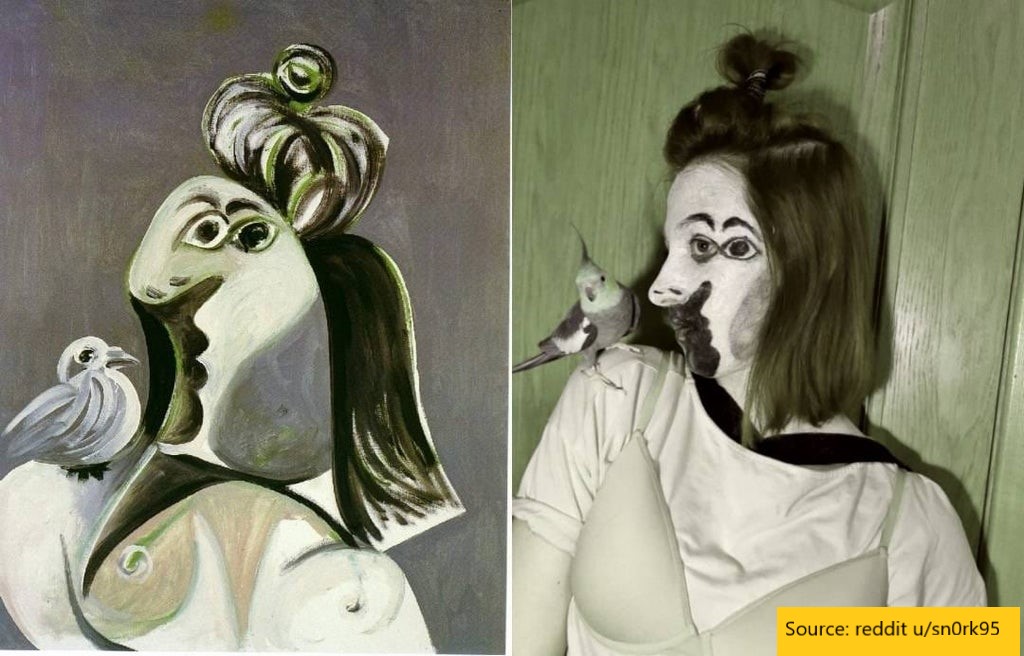
The style of the original image on the left is distinct, and most of you would guess it’s something by Picasso, even if you haven’t seen it before (I hadn’t). You’d be right.
Of course, with the post came the usual comments of “why is this art”, “a child could draw this, it’s terrible”, “tax evasion for the elites” that accompany most modern artworks. Some of those are valid questions, and perhaps some of art is indeed a money laundering or tax evasion scam [2], but let’s take a closer look at why Picasso is revered. Bear in mind that I’m not an art expert, and I’m learning as I go, indeed as I write this post. To keep on topic, I’ll discuss just Picasso, though Georges Braque is a key character and influencer in the time period as well.
Early days
Most art is best understood with context, so let’s start with Picasso’s background. Picasso was born in 1881 to two artistic parents, at a time where realism in art was still popular. This included masterpieces such as “Portrait of the Artist’s Mother” or “Science and Charity” below, obviously painted by someone with talent. These works were painted to capture a scene at a point in time, as though you were staring at it from one particular perspective. Notice the lifelike detail in the textures and colours, the illusion of depth and 3D appearance, and also how the casting of shadows lets you know where the light is coming from. It’s as though we took a picture from one angle.
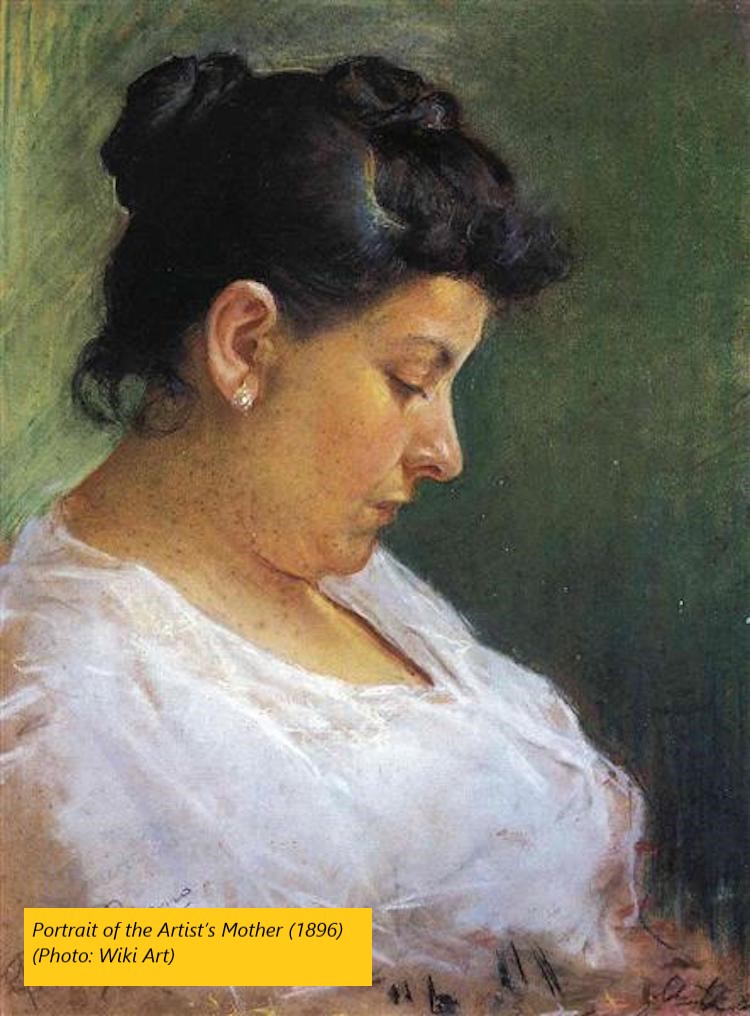
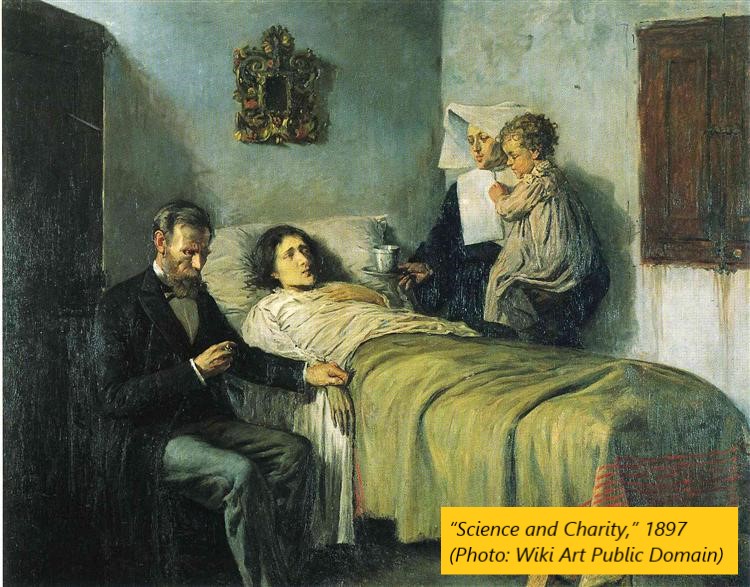
In “Science and Charity”, notice how the crumples of the bedsheets suggests which parts are in front and which parts behind. The shading of the pillow tricks you into thinking the head is making an indentation. The brush strokes in the man’s bristles give a different texture to the child’s curls.
One might think that Picasso looked at the above paintings, decided that it was all too difficult, and spent the rest of his life rebelling against tiger parenting by producing increasingly strange paintings that don’t make sense. Just like how I’ve given up being able to afford a home, perhaps Picasso gave up on pretty pictures because he couldn’t hack it.
One would also be wrong [3], as both those paintings above are actually Picassos as well. Not only that, but they were done when he was less than twenty years old. Clearly, Picasso could paint, and paint as good as any of the old masters. The next time you hear someone say that Picasso had no talent, you can point them to his earlier work.
Now take a look at another Picasso, painted after the two above:
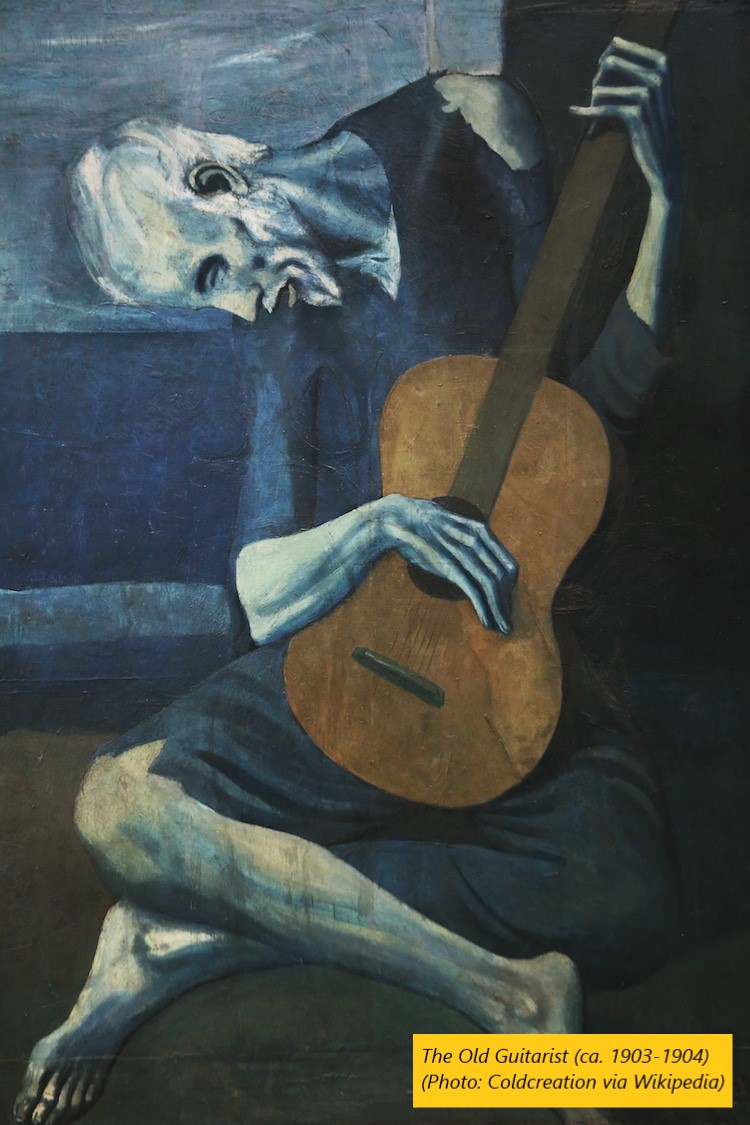
What’s the difference? For one, the colour has changed, to the point where even someone colour blind like me can tell the difference. That’s led to a major mood shift, and the entire painting feels dark, sad, painful. The image is also less realistic than before and with less detail, though we can still recognise it’s a person with a guitar.
What’s stayed the same? We’re still seeing the scene from one point of view, and just seeing one possible perspective of the subject in the painting. There’s less depth, but we can still see that some things are in front of others. It’s as though we took a picture from one angle and put some bad filters on.
Kelly Richman-Abdou believes the shift in styles was due to depression caused by a friend’s suicide; I’ll defer to her knowledge. Picasso is now experimenting, moving away from realism, exploring what more there is to art than just duplicating an image.
Cubism
In 1907 Picasso paints a scandalous, Cezanne and African art inspired piece, “Les Demoiselles d’Avignon.” This work, of prostitutes in a Barcelona brothel, would be the start of cubism, one of the most influential movements in art and a new way of representing reality.
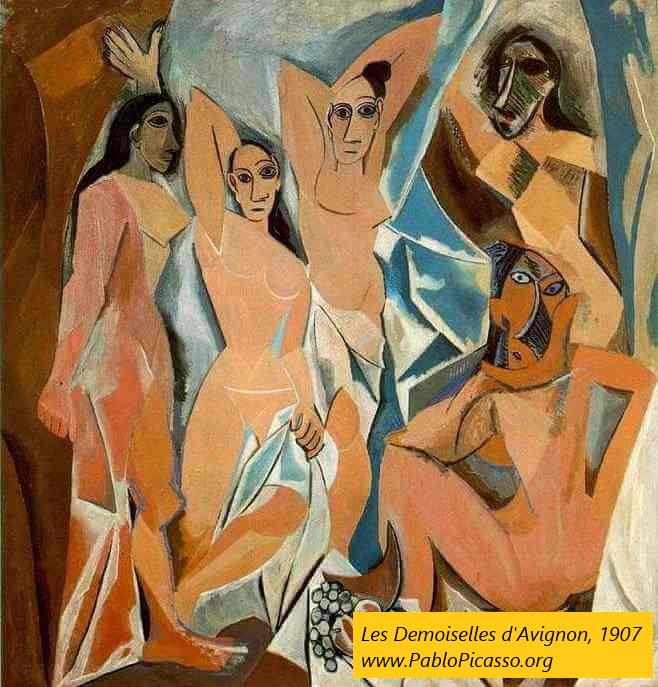
What is going on here? Picasso is clearly no longer going for realism in his drawings. A lot of the image also feels 2D and flat, as he doesn’t care about giving an illusion of three dimensional space anymore.
Even more interesting is the face on the bottom right. It’s inspired by African art, but also there’s obviously something strange with it. The elements of the face don’t align where you expect them to be, the shadows are off, almost as if you were looking at the person from multiple points of view and trying to put all of that down on a flat surface. Which is precisely what Picasso is trying to do.
Recall the start where we talked about realistic drawings, where the textures and colours were lifelike, the images felt they had depth, and how everything was seen from one perspective? Picasso took all of that and flipped it, creating something that was abstract, flat, and seen from multiple points of view.
‘A head’, said Picasso, ‘is a matter of eyes, nose, mouth, which can be distributed in any way you like’.
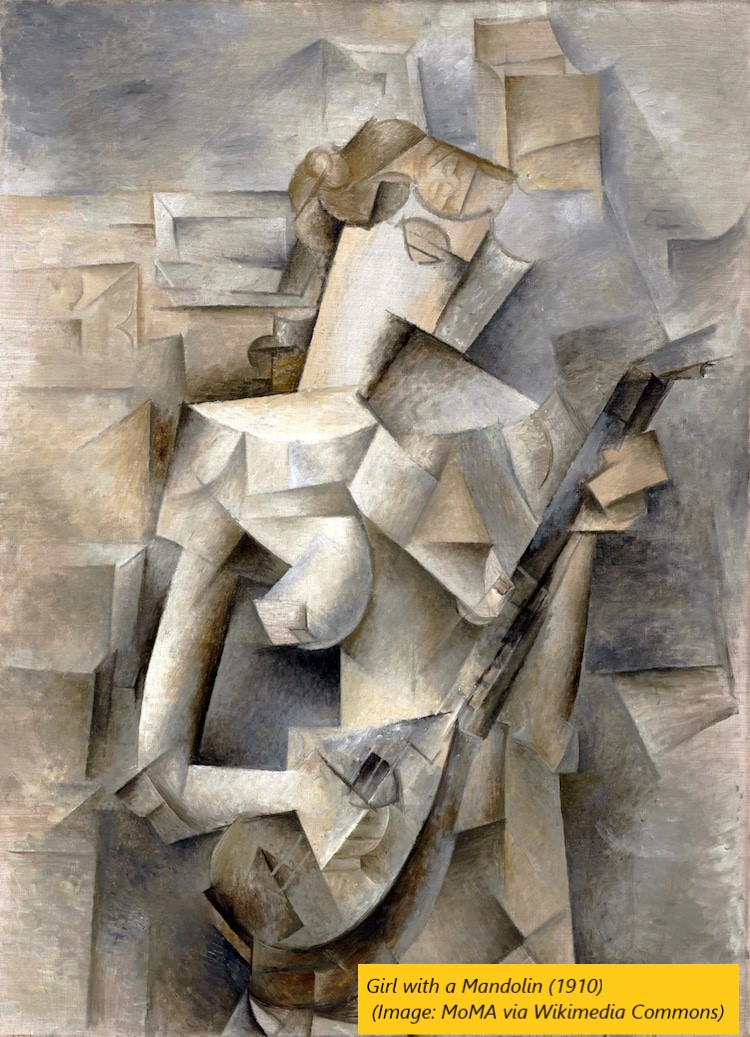
Works such as “Girl with a Mandolin” above do not have one perspective. Instead, imagine if you painted a nose seen from one spot, then move a few metres to the left and painted an eye seen from that spot. Then, moving above the person to paint the lips as seen from above. You’ll get a bizarre blend of elements, shadows being cast all over the place, and nothing making sense, as shown in this video by MoMa.
Contrast this with a typical realistic painting, and you can see why cubism was so novel and outrageous. Given how colour photography was taking off, one can imagine why painters wanted to look for something that photography could not do. If you have a tool that represents reality perfectly, what then is the point of art? Picasso and his peers are trying to send a message that there’s more to art than just recreating a scene.
Collages
Around the same time, Picasso and Georges Braque also start popularising collages. It’s one of the first types of art that uses multiple media, having not just paint but other objects pasted onto the canvas. You can see how the progression of having multiple perspectives leads to him wanting to put a collection of things together in search of meaning for a coherent whole.
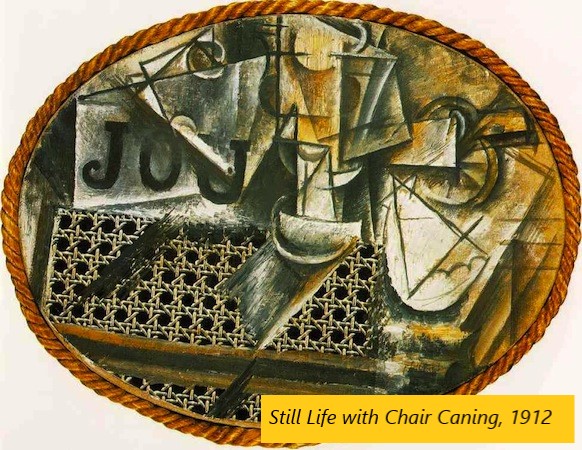
In “Still Life with Chair Caning”, Picasso has an actual rope on the edge of the painting, which also has a print of chair caning (that brown material on the bottom left used in chairs), and painted a bizarre scene on top. He’s making a collage of at least three separate types of things.
Why is this weird? Before this, remember that everyone just painted things. If you wanted that chair caning image, you’d paint it. What’s the point of your art if you just took a print and stuck it on your canvas? And then, using rope as a frame on top of that, in contrast to the luxurious frames you’d expect, Picasso is rejecting the status quo of art.
It’s a bit hard to see what he was trying to paint on the top, and this video does a good job at showing you. If you look closely, there’s a pipe in the top left, a glass in the middle, and a knife, fruit, and napkin on the right. All of these have been broken into multiple views, as mentioned before, to make us wonder “What would it be like if I viewed a cafe table from different angles, all at once?”
Surrealism and more
After this, Picasso moves away from multiple perspectives, to painting things the way he visualises them, in an abstract sense. He takes pieces from everywhere and puts them together in different ways, playing around with the elements that make up the object. He moves towards the surreal, unconcious, dreamlike styles that we saw in that first image. There is little attachment to reality anymore [4].
“I paint objects as I think them, not as I see them”.
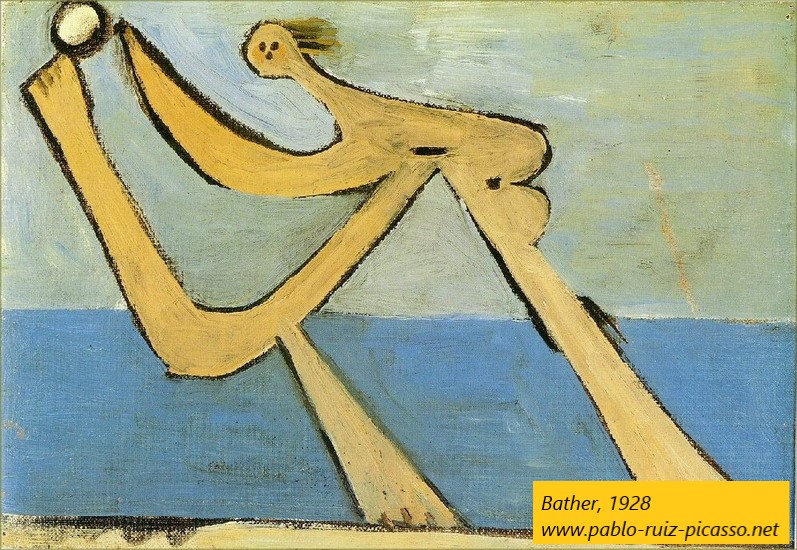
From then on until his death, Picasso continues to create art, mixing his styles and continuing to experiment. It is estimated he did >13k paintings in his lifetime, which excludes tens of thousands more prints and illustrations. Although some would be panned during his lifetime, they would later be seen as precursors of other art movements.
Concluding thoughts
What have we learnt in this brief history?
- Picasso was a talented painter, and knew what he was doing when he started breaking the rules
- You can trace the logic in his progression, and why his work evolved in the way it did
- He produced a huge volume of work, continuously trying different things. Today he’s known for his best pieces, not his worst
Picasso demonstrated that art has appeal beyond the aesthetic. You may not find the paintings pretty (I don’t), but that’s not the point. In doing so, he pushed art to new boundaries.
Does this matter today? Who cares if he mixed different points of view, used multiple media, or created collages? Has Picasso influenced anything?
I’ll leave you to decide:

Footnotes
- Source is here. Reddit is an online forum, for those unaware.
- Looking at you, Rothko. Ok fine they’re good too, I just don’t like them. Art is subjective yadda yadda.
- Well, at least on the Picasso front. TBD on the housing front.
- Some people would not classify Picasso as a surrealist. I don’t know enough to comment here; the pictures look surreal
If you liked this, sign up for my monthly finance and tech newsletter: